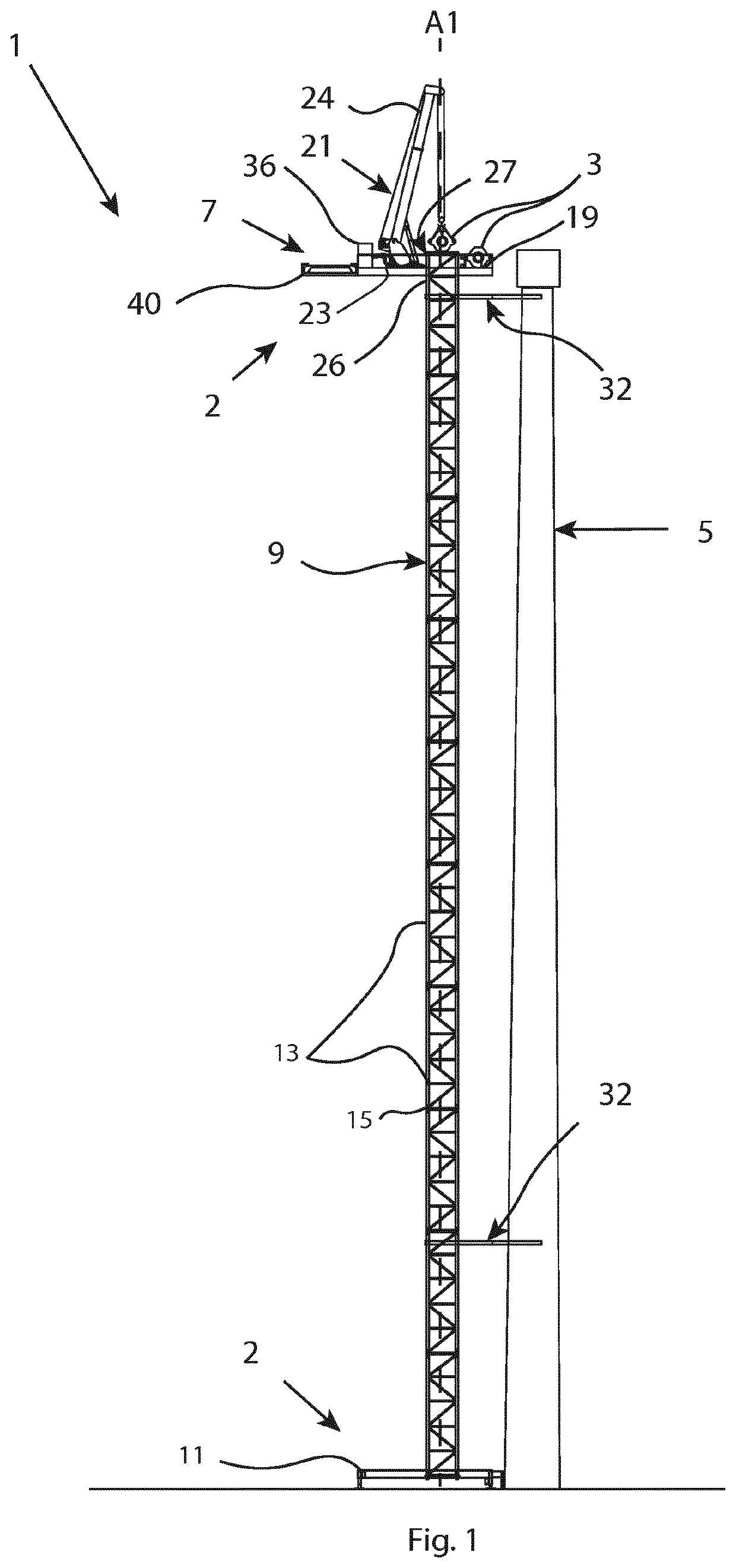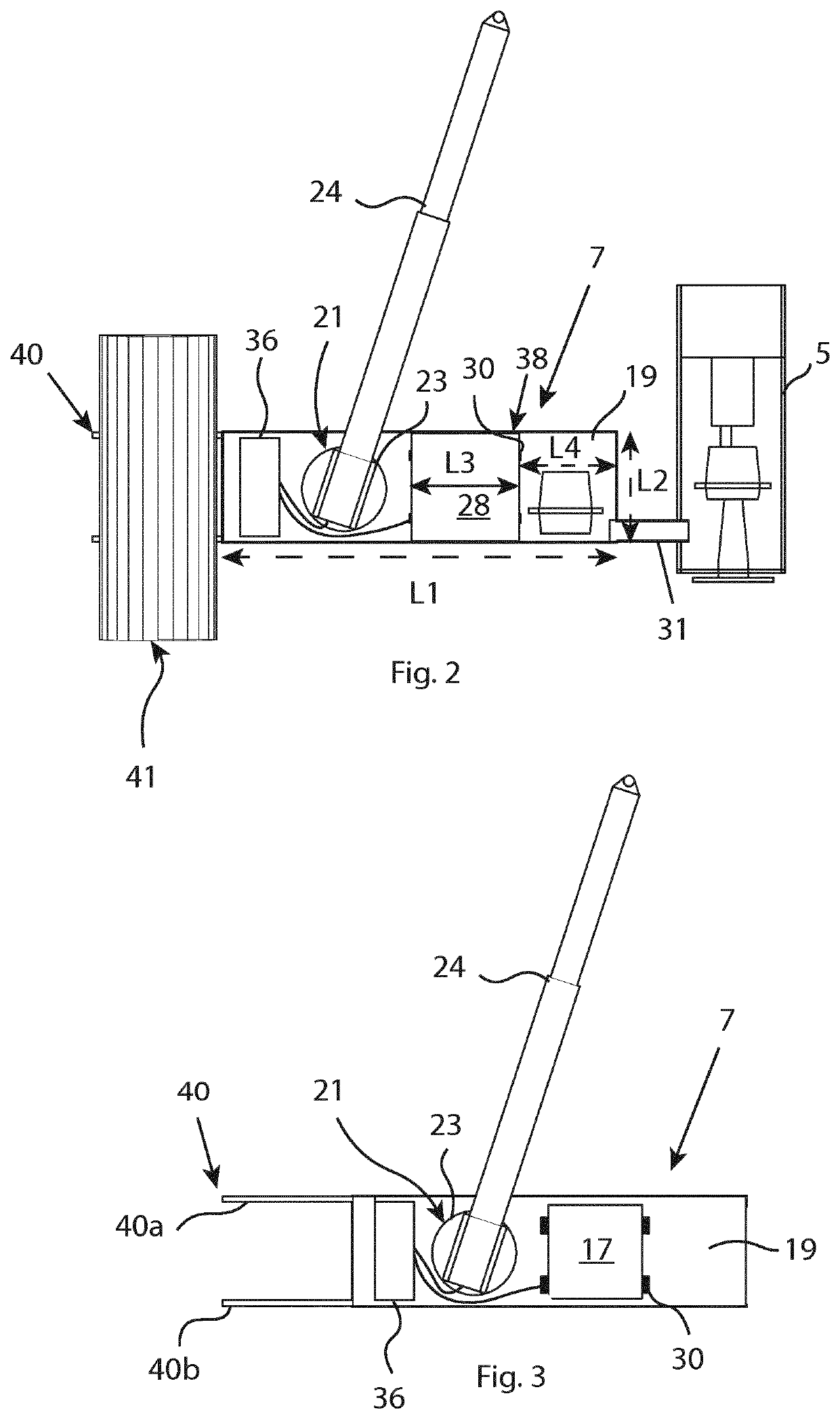Lifting assembly for elevating components to a wind turbine and a method for using the lifting assembly
a technology for wind turbines and components, which is applied in the manufacture of wind turbines, machines/engines, wind motor assemblies, etc., can solve the problems of affecting the operation of wind turbines, affecting the transportation of components, and affecting the quality of wind turbines, so as to facilitate the transportation of components
- Summary
- Abstract
- Description
- Claims
- Application Information
AI Technical Summary
Benefits of technology
Problems solved by technology
Method used
Image
Examples
Embodiment Construction
[0084]FIG. 1 shows a lifting assembly 1 for elevating components 3 to a wind turbine 5. The lifting assembly 1 is arranged in close proximity to the wind turbine 5. The lifting assembly 1 comprises a plurality of tower segments 13 which together form an elongated tower 9 with an adjustable height. The lifting assembly 1 further comprises a lifting device 2 including a support frame 11 for supporting the tower, a securing assembly 32 for securing the tower 9 to the wind turbine, a platform 7 arranged linearly moveable relative the support frame 11 and a crane 21 disposed on the platform. The platform 7 is arranged above the support frame 11. The platform is vertically movable in relation to the support frame 11. In this embodiment of the invention, the platform is also linearly moveable relative the tower 9 in a vertical orientation. The platform has a first storage area 19 for supporting components weighing more than 10 tons. The support frame 11 is arranged on the ground and is ada...
PUM
 Login to View More
Login to View More Abstract
Description
Claims
Application Information
 Login to View More
Login to View More - R&D
- Intellectual Property
- Life Sciences
- Materials
- Tech Scout
- Unparalleled Data Quality
- Higher Quality Content
- 60% Fewer Hallucinations
Browse by: Latest US Patents, China's latest patents, Technical Efficacy Thesaurus, Application Domain, Technology Topic, Popular Technical Reports.
© 2025 PatSnap. All rights reserved.Legal|Privacy policy|Modern Slavery Act Transparency Statement|Sitemap|About US| Contact US: help@patsnap.com



